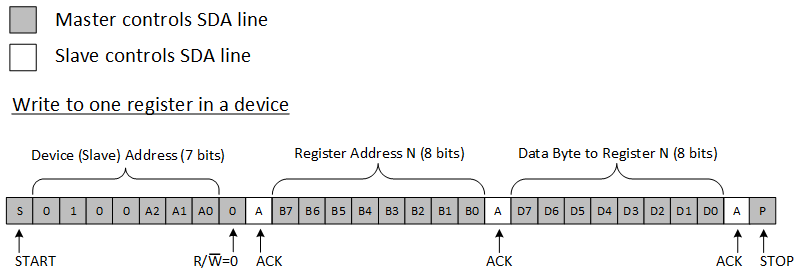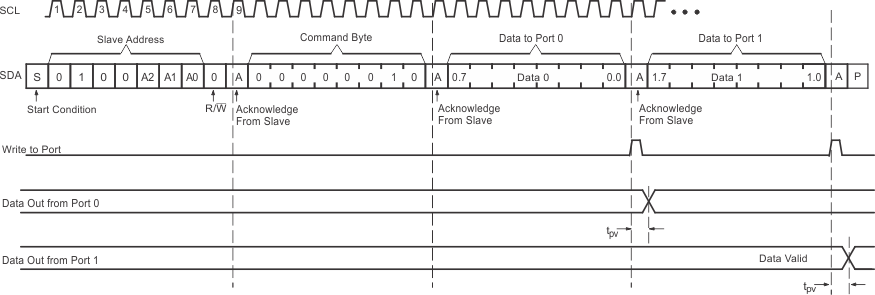SCPS200E July 2009 – April 2019 TCA9555
PRODUCTION DATA.
- 1 Features
- 2 Applications
- 3 Description
- 4 Revision History
- 5 Description (continued)
- 6 Pin Configuration and Functions
- 7 Specifications
- 8 Parameter Measurement Information
- 9 Detailed Description
- 10Application and Implementation
- 11Power Supply Recommendations
- 12Layout
- 13Device and Documentation Support
- 14Mechanical, Packaging, and Orderable Information
Package Options
Mechanical Data (Package|Pins)
Thermal pad, mechanical data (Package|Pins)
Orderable Information
9.5.2.1.1 Writes
To write on the I2C bus, the master sends a START condition on the bus with the address of the slave, as well as the last bit (the R/W bit) set to 0, which signifies a write. After the slave sends the acknowledge bit, the master then sends the register address of the register to which it wishes to write. The slave acknowledges again, letting the master know it is ready. After this, the master starts sending the register data to the slave until the master has sent all the data necessary (which is sometimes only a single byte), and the master terminates the transmission with a STOP condition.
See the Control Register and Command Byte section to see list of the TCA9555's internal registers and a description of each one.
Figure 26 to Figure 28 show examples of writing a single byte to a slave register.
 Figure 26. Write to Register
Figure 26. Write to Register <br/>
 Figure 27. Write to the Polarity Inversion Register
Figure 27. Write to the Polarity Inversion Register  Figure 28. Write to Output Port Registers
Figure 28. Write to Output Port Registers